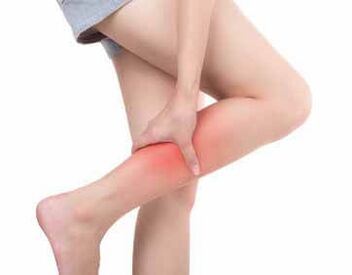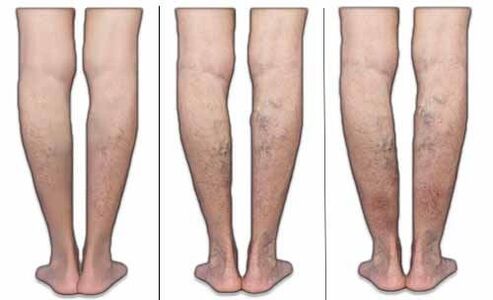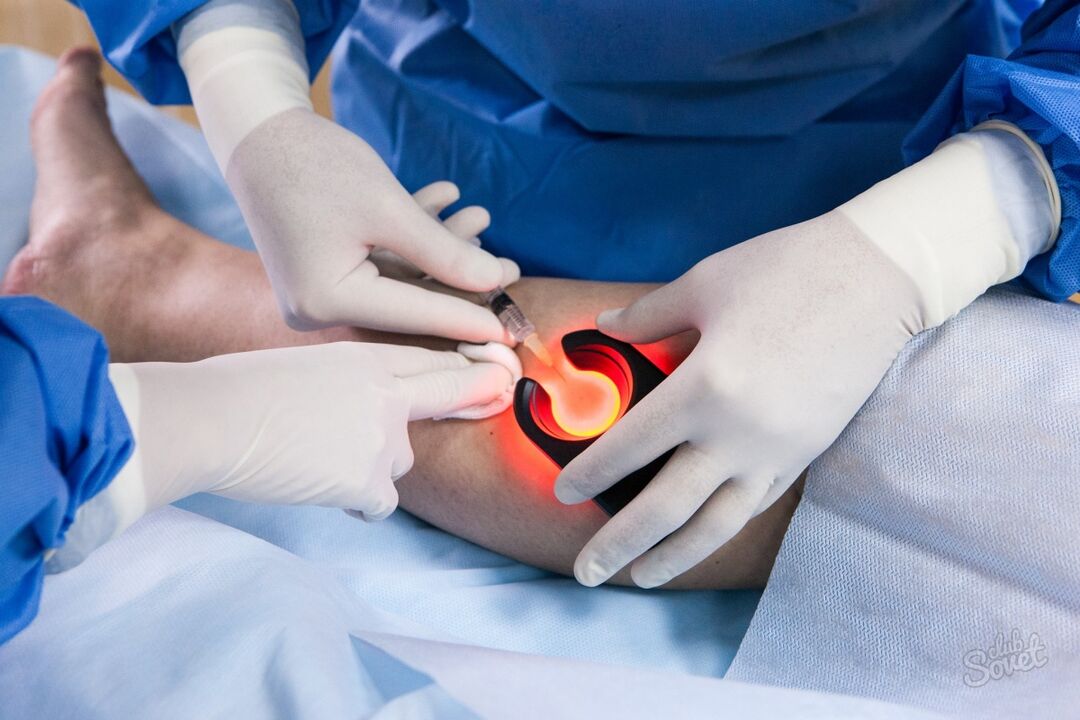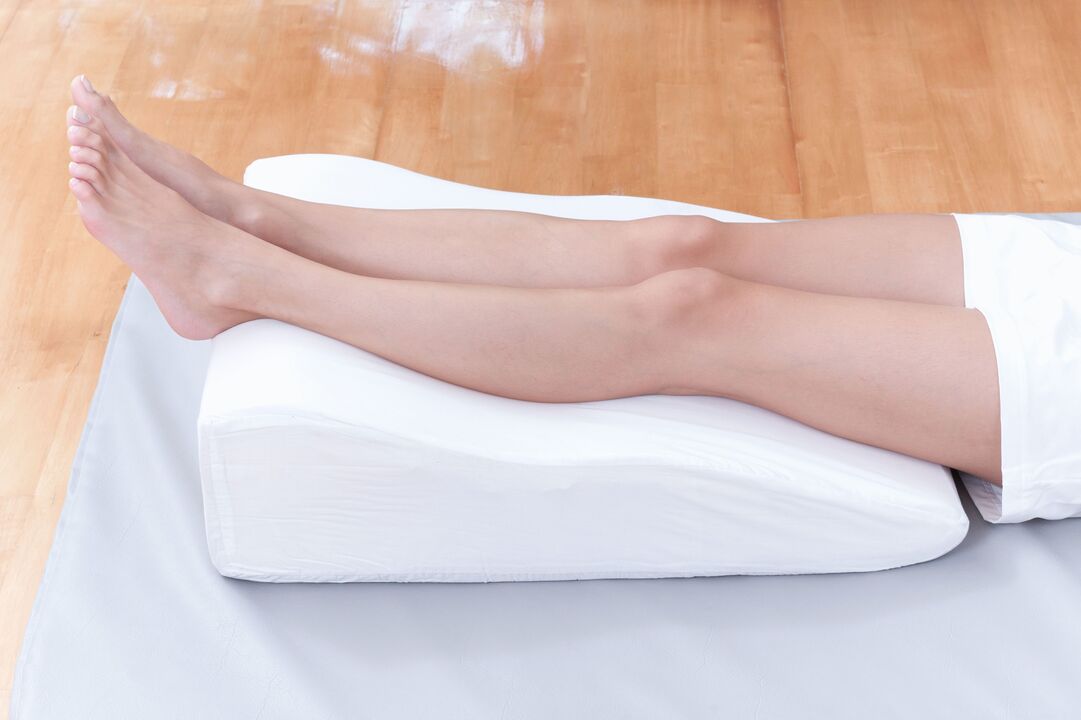Varicosis is a systemic disease that can affect vessels anywhere. The point is a valve dysfunction that controls the bloodstream. Therefore, there is excessive accumulation of fluid in the veins, under the influence of stretching the walls and losing their elasticity.

Often, medical publications focus on symptoms and treatment of varicose veins in the feet, as these various diseases are considered most common: statistically, more than 80% of all cases of varicose veins in the lower limbs. However, despite this, for most patients, the diagnosis of varicose veins is a shock, and its detection occurs at a later stage. All of this shows insufficient awareness of people about the dangers of varicose veins.
Features -Features, causes and mechanisms of development of varicose veins
The main feature of the varicose veins is its area. Changes are subject to shallow and deep veins on a large length. Because there is a relatively large and long load in the legs, valves in the circulatory system can begin to weaken in the childhood. Therefore, detection of varicose veins in the feet often occurs in young and female.
It is a lower leg characterized by such a phenomenon as a hidden varicose vein: against the background of obvious changes in the veins and unpleasant symptoms, there are no signs of the disease. Therefore, in about one third of all cases, the disease is detected in advanced stages.
To perform effective treatment for varicose nodes in the feet, doctors need to know the causes of the incident. Because while using radical methods in 80% of patients, varicose veins occur, special attention should be paid to reduce the effects of the process of varicose veins. These include:
- The predisposition of heredity is a factor that is actually uncontrolled, which, however, can be prevented by standard prevention measures;
- Physical influence - increased load on the feet (long standing and sitting, habit of crossing the legs, overweight, weight lifting);
- Physiological effects - hormone changes and taking hormone medications (most often contraceptive), metabolic disorders, lack of physical activity;
- The causes of pathological are chronic liver, kidneys, injuries and systematic pull of soft tissue from the lower leg, tumor, squeezing the stomach cavity.
Depending on the location of the veins, the doctor distinguishes several types of varicose veins in the feet:
- Surface. It is expressed by the appearance of the vagina or red varicose grids on the feet, the first resembles the web, and then the plexus the winding line is quite thick.
- In. It is expressed by the invisible defeat during the external examination of the vascular plexus. Pain in the lower veins with the development of this type of varicose varicose, the risk of higher complications.
- Combined when deep and shallow veins are subject to change.
The establishment of the causes of varicose veins and its removal is in a close relationship. First and foremost, it is important to exclude factors that have the greatest negative effect on the vein.
When diagnosing venous changes, it is important to distinguish it from other diseases. For example, varicose veins below the knee look just like Becker Cyst, and are accompanied by the same symptoms.

Phase
The appearance of the first signs of varicose veins in the foot occurs at the progressive stage, when the vein valves perform their function by less than 50%. In the first or zero varicose veins, known as the "compensation stage", there is no discomfort, and a visible change. Early stage detection of varicose veins in the feet occurs with careful examination of the body by a phlebologist.
In the second stage of varicose veins, known as "subcompensation", changes are well described:
- Large lines of veins can be seen under the skin, but they may not stand out on the surface of the skin;
- On the surface of the skin on the hips and below the knee, the thin varicose grid pattern of the blue or red capillaries is clearly visible;
- By evening, the feet become swollen;
- At night, the calf muscles are narrow.
The level of varicose veins in the lower leg is distinguished by increasing symptoms, which weaken after rest.
In the final stages of varicose veins, decompensation occurs: the body cannot increase the need for tissue in oxygen, and valves in the veins by 90% of their functioning. The condition of the limbs worsened due to insufficient blood supply. This level of varicose veins is characterized by a decrease in tissue ability for regeneration. The abundance of complications exacerbates the general condition of the patient. Symptoms in the final stage of varicose veins are always preserved.
Symptom
The most common and early symptoms of varicose veins are foot pain at the end of the workday. It seems to be with changes in the vessels and the surface, and it is an insufficient blood supply signal to the soft tissue. In some cases, the pain is one of the symptoms of varicose veins from the deep veins in the lower leg. With changes in the surface vessel, the appearance of varicose veins in the feet, which often creates aesthetic difficulties, indicates the development of the disease.
The nature of pain with varicose veins at different levels of the development of the disease may vary:
- In the early stages, there was little discomfort that resembled normal fatigue;
- With development to the second stage, burning sensations appear in the legs of the varicose veins, which are often localized under the knee;
- Interesting pain with varicose veins in the lower leg is accompanied by 2 and 3 stages of the disease, together -with this, calf muscle cramps can occur;
- Acute pain that triggered chromium occurs in the late stages of the disease.
In addition to clear physical discomfort, the disease is accompanied by external changes. Most patients complain that their feet are scratching - with varicose veins, this is considered a common phenomenon that indicates ischemic process. Thin varicose grids, which practically do not interfere in the first stage, over time are stronger, turn into thick blankets. Any physical activity, including coughing, sneezing or walking, can cause enlarged capillary rupture, and sometimes veins. Blood is poured under the skin, forming hematoma.
The presence of bruises in the feet with varicose veins indicates a stable development of the disease, excessive stretching and thinning of the veins.
The appearance of red spots on the feet with varicose veins, skin peeling, thinning and exposure to injury shows the atropic process of characteristic of the final stage of the disease. Complications are indicated by lower leg redness, which is accompanied by pain and acute shortcomings. Such symptoms are characteristic of phlebitis and thrombophlebitis. If the patient is dried by the foot, this indicates serious vein blockage and the onset of the necrotic process.

Diagnostics
The diagnosis of varicose veins in the legs is exaggerated, as the vessel does not always come to the surface. To confirm the diagnosis, the doctor should conduct an external examination and conduct some instrumental research:
- Duplex scanning or ultrasound on the lower limbs - for varicose veins, it is used in advance to determine the level of stretching of the vascular wall, the properties of blood flow and detecting blood clots;
- Radiography of the body with contrast - a functional examination standard for varicose veins in the lower leg, which allows you to determine blood vessel patency;
- MRI is a standard gold diagnosis of varicose veins in the lower leg, which allows you to evaluate the function of the vein valve, identify the ischemic foci in the soft tissue, detect blood vessels and other pathological changes arising from the varicose vein background.
To explain the complete picture of the disease, laboratory studies are prescribed: coagulograms to assess the risk of thrombosis, general blood tests and biochemistry.
Characteristics of treatment
The treatment of varicose veins in the feet is involved in the phlebology. After determining the level of pathological change, the doctor chooses the most effective, in his opinion, the therapy method. Unfortunately, it will not work to get rid of varicose veins in the legs, as the disease is systematic, as well as modern treatment methods but not 100% stable.
According to statistics, even after using radical methods to treat varicose veins from lower feet in 80% of patients, relapse occurs for 5 years.
In the early stages of varicose veins in the feet, treatment is better conservative. The basics are the use of local and systemic drugs:
- anticoagulants that reduce blood viscosity and improve tissue nutrition;
- Anti -saggers that reduce the risk of thrombosis and increase trophic tissue;
- Venotonic to prevent vein stretching, reducing inflammation and swelling.
With clear discomfort for varicose veins in the feet, NSAIDs are prescribed. The preparation of this group helps reduce pain, preventing the development of complications.
What to do if itching for varicose feet does not allow sleeping, doing the usual things and making you nervous? Need to try the ointment or gel with a cooling effect. They will not affect the veins and will not help overcome the disease, but will quickly relieve the symptoms.
In addition to conservative therapy, doctors often use complex varicose vein complex treatment methods from lower legs, when invasive and minimum surgical surgery is used simultaneously with medical effects. Such a scheme is used for intense symptoms and extensive spread of vein nets. What steps to do and what to do if the varicose veins in the feet begin to come, the phlebologists decide. At the same time, it takes into account all aspects of the development of the disease, the individual characteristics of the body's problems and health, which can be contraindicated to certain procedures.
What method is used to eliminate pathological vessels:
- Freezing laser. It is used if the varicose veins do not shift to 2 and 3 stages, that is, with the presence of small "stars" on the surface of the skin. This method is not painful and effective, but expensive. There is no 100% guarantee of healing, as the removal of the vessels appears, while the causes of the disease are preserved. Apply in the early stages to eliminate cosmetic defects.
- Sclerotherapy. In thin and moderate thickness, the vessels are introduced by the sclerosant, which covers the vein lumen, excluding from the blood flow system. This procedure is practically painless and relatively inexpensive, but has a lot of contraindications. It is used at 1. 2. and sometimes 3 levels.
- Flebectomy is a classic isolation of pathological veins through punctures or wounds on the skin. This method removes the surface varicose veins on the hips and lower leg. After surgery, the scars appear to be permanent, but surgery is the only effective form of developed varicose veins.
Handling surgical intervention or minimally invasive does not mean complete eliminating varicose veins. Patients should regularly visit phlebologists, take medication to maintain veins and wear compression linen.

Contraindications
Experts describe contraindications for varicose veins in any actions that can cause additional stagnation in the vessel at the bottom. These include:
- Long stay in static pose;
- heavy lifting;
- Sitting with bending or across the feet.
Also, patients should avoid consuming alcohol, which helps increase blood viscosity and weaken the blood vessel wall. Smoking can negatively affect the disease. Therefore, after making a diagnosis, it is necessary to leave a bad habit.
Complication
The process of thrombosis and inflammation in the vein wall, previously mentioned, is far from one thing that varicose veins in the feet are harmful to patients in terms of complications. Due to blood circulation disorders, not only the blood vessels, but also the soft tissue suffered, therefore, between the consequences of the varicose veins in the feet, problems with the muscles and skin are mentioned:
- Dermatitis, accompanied by itchy rash, skin ulcer, itching;
- eczema, accompanied by skin cracks;
- Necrotic changes in the skin until gangrene formation;
- trophic ulcer;
- muscle atrophy.
Often, with the development of excess disease and stretching of the blood vessel wall, the risk of patients with bleeding from varicose veins from the lower leg. It can be closed when blood accumulates in the muscles and under the skin and forms hematoma, or open. The second option is full of large amounts of blood and coma arrival, especially if the patient takes anti -agen and anticoagulant.
Complications of varicose veins from lower leg veins can cause not only injury, but also little physical effort, for example, cough or sharp movement.
The most dangerous complications for lower limb varicose veins are pulmonary artery thromboembolism and myocardial infarction. They occur because of the blood clot in the femoral artery and its migration according to the blood flow system in the coronary and lungs. Death in such a process is very high, so it is important for patients to constantly follow the well -being and immediately see the doctor with difficulty breathing and tedious chest pain.


















